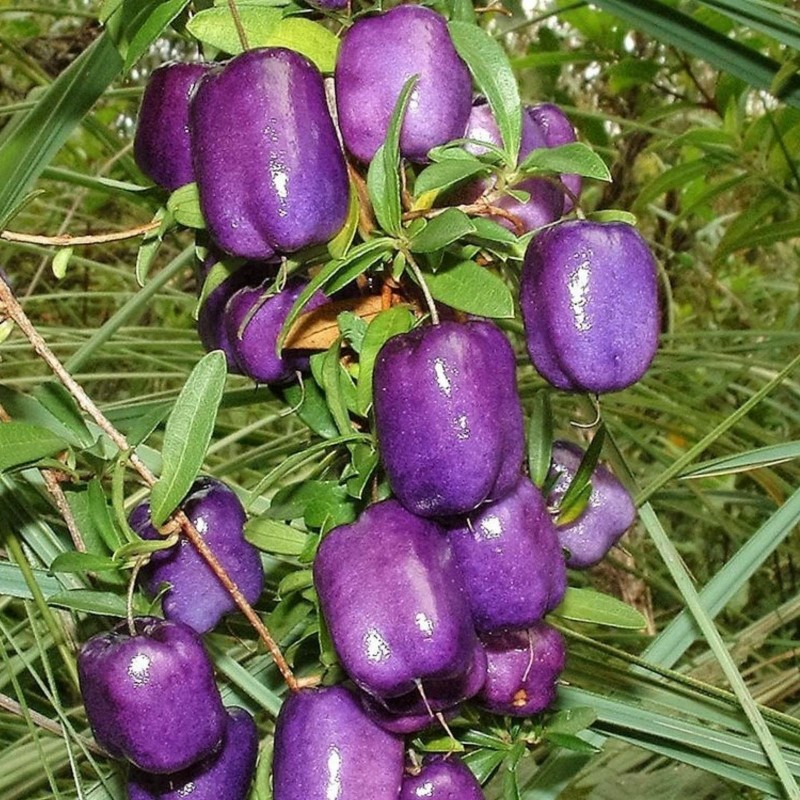
Växten är resistent mot kyla och frost








The Purple Apple Berry, also known as the Mountain Blue Berry, is a small vine native to the cool, moist forests of Australia. The wonderfully shiny, edible purple fruit start off white; becoming fully ripe in early winter after the greenish-yellow tubular trumpet-flowers are pollinated. The fruits are best harvested in late summer, before becoming over ripened.Tasting similar to apples, hence the name, these unusual plants are wonderful eaten raw or even fried and spiced. Ideally grown along trellis, or allowed to climb other plants, the purple apple berry is a hardy (withstanding temperatures as low as -5°C / 23°F), sun loving plant that appreciates being sheltered from high winds. Accustomed to moist, well drained soil, the Billardiera Longiflora is a Royal Horticultural Society Garden Merit Award Winner.
Sowing Instructions:
Sow in trays or pots on the surface of a mix of two-thirds peat based compost, eg. Levington and one third sand, and just cover the seed with a sprinkling of sieved compost or vermiculite.
Place in a propagator or seal inside a polythene bag and maintain an optimum temperature of 15-18C .
Germination should take place in 30-60 days .
PROPAGATION-SMOKE TREATMENT
Smoke treatment is absolutely essential for some Australian native plants and greatly improves germination in others. Simply put, the chemicals in smoke 'break' the seed's dormancy which is the first stage of germination - no smoke, no germination!
There are several methods of smoke treatment short of lighting a bushfire in your backyard. The simplest method is to sow the seed and cover them with smoke impregnated vermiculite as part of the sowing process. When you water, the chemicals are slowly leached out of the vermiculite and bathe the seed in smoke chemicals.
Growing Instructions:
Transplant seedlings when large enough to handle into 7.5cm pots.
Over-winter at a temperature of about 5C.
Harden off and plant out when all risk of frost has passed in full sun or semi-shade.
Will be ok outside in mild areas but protect in cold areas with fleece or by maintaining in a container and over-wintering in a frost free place
Datablad

 Reviews (0)
Reviews (0)